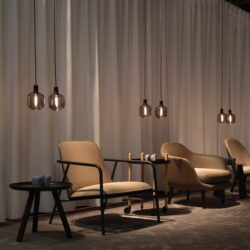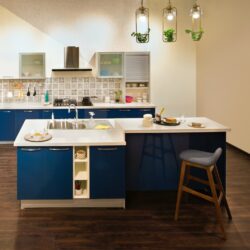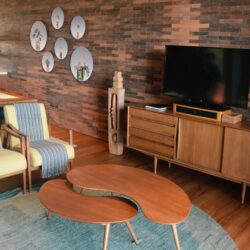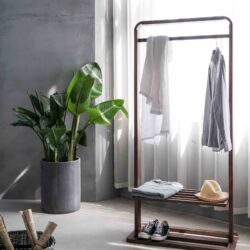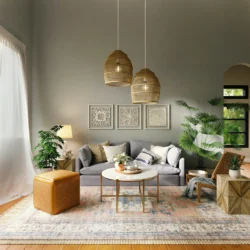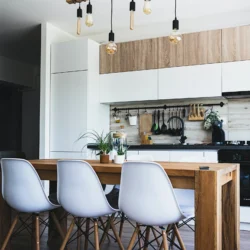Crafting a Greener Home: Eco-Friendly Home Decor for Sustainable Living
Introduction: In an era where environmental consciousness is paramount, individuals are increasingly seeking ways to make eco-friendly choices, even in the realm of home decor. Transforming your living space into an eco-friendly haven not only benefits the planet but also creates a healthier, more sustainable environment for you and your loved ones. Let’s explore some innovative and stylish eco-friendly home decor ideas to inspire your journey toward sustainable living.
- Upcycled Furniture: Consider incorporating upcycled furniture into your home decor. Repurposing old pieces or giving them a fresh coat of environmentally-friendly paint can add character while reducing the demand for new materials.
- Sustainable Materials: Opt for furniture and decor made from sustainable materials such as bamboo, reclaimed wood, or recycled metal. These materials have a lower environmental impact and often contribute to a unique and stylish aesthetic.
- Natural Fiber Textiles: Choose textiles made from natural fibers like organic cotton, hemp, or linen. These materials are not only environmentally friendly but also provide a luxurious and breathable feel to your home.
- Energy-Efficient Lighting: Swap traditional bulbs for energy-efficient LED lights. Consider stylish and eco-friendly lighting fixtures made from recycled or upcycled materials to illuminate your space sustainably.
- Indoor Plants: Bring nature indoors by incorporating houseplants into your decor. Not only do plants improve air quality, but they also add a touch of greenery that complements any design style.
- Recycled Art and Decor: Seek out art and decor crafted from recycled materials. From sculptures made of reclaimed metal to wall art created from salvaged wood, these pieces add a unique flair to your space while reducing waste.
- Low-VOC Paints: When refreshing your walls, choose paints with low volatile organic compound (VOC) content. These paints release fewer harmful chemicals into the air, promoting a healthier indoor environment.
- Secondhand and Vintage Finds: Embrace the charm of vintage and secondhand furniture. Thrift stores, antique shops, and online marketplaces can be treasure troves of unique, pre-loved pieces that add character to your home while reducing your carbon footprint.
- Solar-Powered Decor: Integrate solar-powered decor elements, such as outdoor lighting or decorative solar panels, to harness the power of the sun and reduce reliance on traditional energy sources.
- DIY Eco-Friendly Projects: Engage in do-it-yourself projects using recycled or repurposed materials. From crafting your own furniture to creating unique decor items, DIY projects allow you to express your creativity while contributing to a more sustainable lifestyle.
Eco-friendly home decor is not just a trend; it’s a commitment to a more sustainable and responsible way of living. By making mindful choices in the items we bring into our homes, we can create spaces that reflect our values and contribute to a healthier planet. Let your home be a showcase of sustainable living, demonstrating that style and eco-consciousness can go hand in hand.
Certainly! Here’s a set of frequently asked questions (FAQ) related to eco-friendly home decor for sustainable living:
Q1: What is eco-friendly home decor? A1: Eco-friendly home decor involves choosing sustainable, environmentally friendly materials and practices for decorating homes. This includes items made from renewable resources, recycled materials, and those with minimal environmental impact.
Q2: How can I make my home decor more eco-friendly? A2: Start by choosing sustainable materials such as bamboo, recycled wood, and organic textiles. Opt for second-hand or vintage furniture, use energy-efficient lighting, and incorporate plants for natural air purification.
Q3: Are there specific certifications for eco-friendly home decor products? A3: Yes, look for certifications such as FSC (Forest Stewardship Council) for wood products, OEKO-TEX for textiles, and ENERGY STAR for energy-efficient appliances. These certifications ensure that products meet certain environmental and sustainability standards.
Q4: Can I still have a stylish home while choosing eco-friendly decor? A4: Absolutely! Many stylish and trendy decor items are available that are also eco-friendly. Look for items with modern designs made from sustainable materials. Mixing and matching sustainable pieces can create a chic and unique aesthetic.
Q5: What are some eco-friendly materials for home decor? A5: Sustainable materials include bamboo, reclaimed wood, recycled glass, organic cotton, and cork. Additionally, materials like recycled metal and repurposed materials can be used creatively in decor items.
Q6: How can I reduce waste in home decor? A6: Choose items with minimal packaging, buy second-hand or vintage furniture, and repurpose or upcycle existing items. Donate or recycle items you no longer need instead of disposing of them in the trash.
Q7: Can I find eco-friendly and non-toxic paints for my walls? A7: Yes, there are low-VOC (volatile organic compound) and zero-VOC paint options available. These paints emit fewer harmful chemicals, contributing to better indoor air quality.
Q8: How can I incorporate sustainable lighting into my home? A8: Choose energy-efficient LED bulbs, use natural light whenever possible, and consider solar-powered outdoor lighting. Additionally, select light fixtures made from sustainable materials like bamboo or recycled metal.
Q9: Are there eco-friendly options for window treatments? A9: Yes, opt for curtains or blinds made from organic fabrics such as linen or hemp. Consider using bamboo shades, which are a renewable resource.
Q10: Can I find eco-friendly furniture for my home? A10: Yes, look for furniture made from sustainably harvested wood, recycled materials, or pieces crafted from reclaimed or repurposed items. Many companies now offer furniture lines with a focus on environmental sustainability.
In conclusion, embracing eco-friendly home decor is a powerful and impactful step towards sustainable living. This design approach goes beyond aesthetics, incorporating environmentally conscious choices that contribute to a healthier planet. From sustainable materials and energy-efficient solutions to mindful consumption and waste reduction, eco-friendly home decor is a testament to the idea that our living spaces can be both stylish and responsible.
One of the key principles of eco-friendly home decor is the use of sustainable materials. Choosing furniture and decor items made from renewable resources, recycled materials, or reclaimed wood not only reduces the demand for new resources but also minimizes the environmental impact associated with manufacturing and transportation. This conscious selection of materials promotes a circular economy and supports the overall goal of reducing our ecological footprint.
Energy efficiency is another crucial aspect of eco-friendly home decor. Integrating energy-efficient appliances, LED lighting, and smart home technologies not only lowers utility bills but also reduces overall energy consumption. Additionally, utilizing natural light through well-designed windows and incorporating thermal insulation contributes to a home’s energy efficiency, creating a more sustainable and eco-conscious living environment.
Mindful consumption plays a significant role in eco-friendly home decor. Opting for timeless, durable, and versatile pieces over trends encourages a more sustainable approach to interior design. Additionally, repurposing existing furniture or investing in second-hand pieces reduces the demand for new production and extends the lifecycle of items, minimizing waste and promoting a circular economy.
Waste reduction is a fundamental principle of sustainable living, and it extends to home decor choices. Selecting items with minimal packaging, recycling materials, and supporting brands with transparent and eco-friendly practices contribute to a more responsible consumer culture. Upcycling and DIY projects also offer creative ways to breathe new life into old items, reducing the amount of waste sent to landfills.
The holistic nature of eco-friendly home decor extends beyond the interior to outdoor spaces. Incorporating sustainable landscaping practices, such as native plantings and water-saving irrigation systems, enhances the overall environmentally conscious approach. Rainwater harvesting and composting further contribute to a more sustainable and eco-friendly living environment.
Ultimately, eco-friendly home decor is a reflection of a conscious and responsible lifestyle. It demonstrates that sustainability and style can coexist, proving that the choices we make in our homes have a lasting impact on the planet. By embracing eco-friendly practices in home decor, individuals can contribute to a more sustainable future, creating living spaces that not only inspire but also respect and preserve the natural world.



